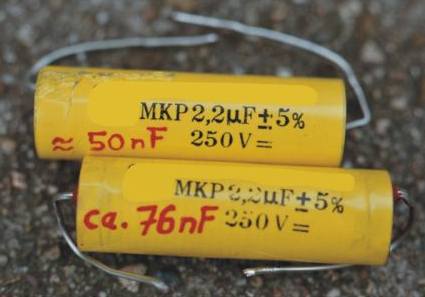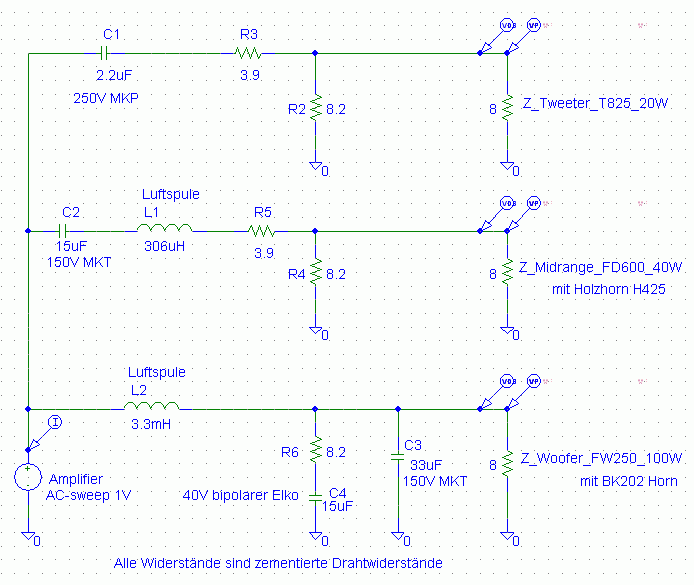failed foil capacitor from a speaker cross over networkA capacitor with a loss in capacity from original 2.2µF to only 50nF. Resulting in a poor tweeter functionality.Application:the capacitor used in a cross over network for an ACR Fostex Loudspeaker, a folded exponential horn speaker BK202. The foilcapacitor of 2.2µF/250V functioned as AC coupling in the high pass filter for the ACR T825 horntweeter. At first glance I thought the tweeter has finished with life, almost no sound comes out. Who think's first about an failed coupling capacitor. A measurement on the tweeter terminals with an oscilloscope shown at once, only some poor millivolts even with a wide open amplifier volume. Error must be somewhere between amplifier and terminals.
Note: don't think the tweeter is bad, it's the capacitor blame. The capacitor was of a bad quality, a capacitor of this size/volume and working voltage should be strong enough to easily widhstands with the tweeter currents. The midrange speaker is an ACR Fostex FD600 with an massive nut wooden horn. The woofer an ACR Fostex FW250 with the BK202 horn.
BackgroundThe speakers were bought as DIY kit at the end of the eighties. Also the cross over network was "the proud" of the seller: "selected parts of highest quality, well designed and selected for the speakers". Yes, it could be - but that coupling capacitor wasn't that thing he promised. No problem it's life. The other parts are:
Cross Over Network SchematicOf course the network were rengineered to get the schematic. A simulation with Pspice.
Influence on sound?The loss of the capacitance leds to much loss in high frequency audioble tones.
The other parts are still ok after 20 years:
|
||||||||||||||||||||||||||










